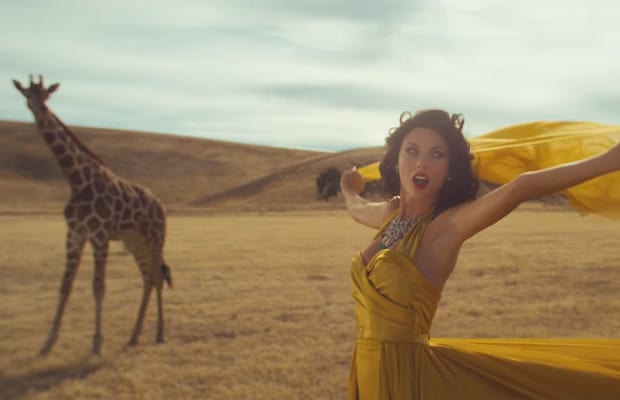A new video from American pop star Taylor Swift (pictured) is causing a stir among a swathe of critics who see her “Wildest Dreams” release as an exercise in racist nostalgia for an oppressive time period in Africa.
SEE ALSO: Afropunk 2015 Rocks Brooklyn
Keep Up With Face2Face Africa On Facebook!
Showing the customary shots of Africa’s landscapes, Swift’s video is said to feature the artist in a 1950s-era Botswana and South Africa as she films a movie with her love interest.
The video is replete with giraffes, antelopes, and a lion, as Swift swoons for the love that she ultimately can’t have.
Released on Monday, the video — already at more than 19 million views — has garnered loads of criticism for “glamorizing a White colonial fantasy of Africa.”
Indeed, in spite of Director Joseph Kahn‘s denials that there aren’t only White people in the video (“The reality is not only were there people of colour in the video, but the key creatives who worked on this video are people of colour.”), an African is not seen in the 3 minutes and 54 seconds of the song.
Watch “Wildest Dreams” for yourself here:
Adding to his defense, Kahn points to the fact that, while he is Asian American, both the producer (Jill Hardin) and the editor (Chancler Haynes) of the video are African Americans, “We collectively decided it would have been historically inaccurate to load the crew with more black actors as the video would have been accused of rewriting history.
“This video is set in the past by a crew set in the present and we are all proud of our work.
“There are Black Africans in the video in a number of shots, but I rarely cut to crew faces outside of the director as the vast majority of screen time is Taylor and Scott (Eastwood).”
Kahn’s statements, though, have done little to calm the ire of critics, such as Ugandans Viviane Rutabingwa and James Arinaitwe, who write in “Taylor Swift Is Dreaming of a Very White Africa“:
Taylor Swift is dressed as a colonial-era woman on African soil. With just a few exceptions, the cast in the video — the actors playing her boyfriend and a movie director and his staff — all appear to be white.
We are shocked to think that in 2015, Taylor Swift, her record label and her video production group would think it was OK to film a video that presents a glamorous version of the white colonial fantasy of Africa. Of course, this is not the first time that white people have romanticized colonialism: See Louis Vuitton’s 2014 campaign, Ernest Hemingway’s Snows of Kilimanjaro, the 1962 film Lawrence of Arabia and of course Karen Blixen’s memoir Out of Africa.
But it still stings.
In the video for “Wildest Dreams,” Taylor Swift and Scott Eastwood act out the story of a love affair set in Africa (although her scenes were filmed in California).
Here are some facts for Swift and her team: Colonialism was neither romantic nor beautiful. It was exploitative and brutal. The legacy of colonialism still lives quite loudly to this day. Scholars have argued that poor economic performance, weak property rights and tribal tensions across the continent can be traced to colonial strategies. So can other woes. In a place full of devastation and lawlessness, diseases spread like wildfire, conflict breaks out and dictators grab power.
But Rutabingwa and Arinaitwe are not alone; others took to Twitter to also air their discontent:
So what do you think? Is “Wildest Dreams” just a love story with a romantic backdrop or is it a redundant depiction of a whitewashed Africa?
SEE ALSO: Kenyan ‘Monsoons Over the Moon’ Tells Story of Woman Trapped in Post-Apocalyptic Nairobi












